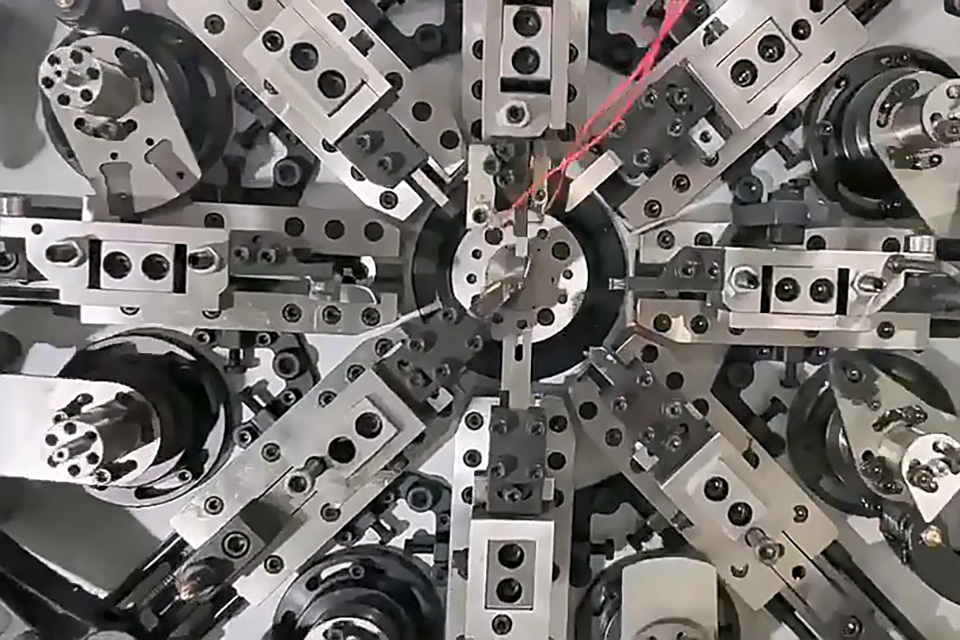1) Material selection and pretreatment
Material selection: In terms of material selection, in addition to common steel wires, stainless steels, etc., we can also consider using high-performance materials such as high-strength alloy steels and titanium alloys to meet special working environment and performance requirements.
Material pretreatment: After the material is selected, the necessary pretreatment steps are carried out, such as removing impurities such as surface oil stains and oxide scale, to ensure the cleanliness and quality of the material surface.
2) Bending and forming
Bending process: use professional CNC spring forming machine or CNC bending machine with molds and tools to accurately form raw materials according to the curve and angle of the drawing.
Control Parameters: Precise machine programming is used to tightly control the various parameters of the springs to ensure that the final spring product can meet the tolerances required by the drawings.
3) Hardening
Heat treatment: Through high-temperature heating and cooling, the internal structure and properties of the material are changed, with the aim of improving the strength, elasticity and service life of the spring.
Treatment: There are many ways of heat treatment, including the commonly used heat treatment methods of springs include normalizing, quenching, carburizing, etc., and the appropriate heat treatment method should be selected according to the material, working environment and performance requirements of the spring.
4) Finishing
Processing content: Grinding, polishing and other finishing treatments on the formed springs to improve the surface finish and accuracy of the springs.
Tools and equipment: use professional grinding machines, polishing machines and other equipment for finishing to ensure processing efficiency and product quality.
5) Surface treatment
Treatment method: According to the use environment and requirements of the spring, choose the appropriate surface treatment method, such as electroplating, spraying, etc., to improve the corrosion resistance and appearance quality of the spring.
Coating selection: Choose coating materials with wear-resistant, corrosion-resistant, high-temperature and other properties to ensure the adhesion and durability of the coating to the spring substrate.
6) Inspection and testing
Inspection content: The testing team needs to compare the sample of the spring or the final finished product with the drawings to ensure that the spring meets the design requirements and quality standards.
Test method: Use tensile testing machine, torque testing machine, hardness testing machine, durability testing machine, elastic testing machine and other machines to test and evaluate the performance of the spring to ensure that the performance of the spring is stable and reliable.
7) Packaging & Storage
Packaging requirements: Pack the springs that pass the inspection to ensure that they are not damaged or contaminated during transportation and storage.
